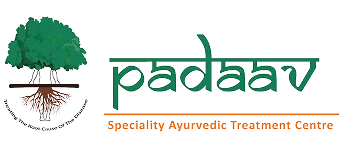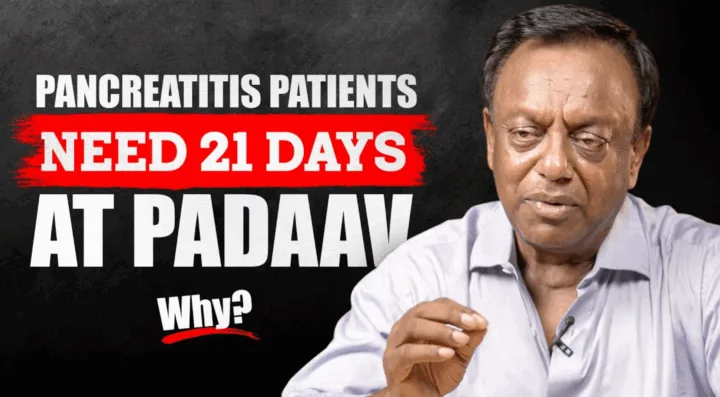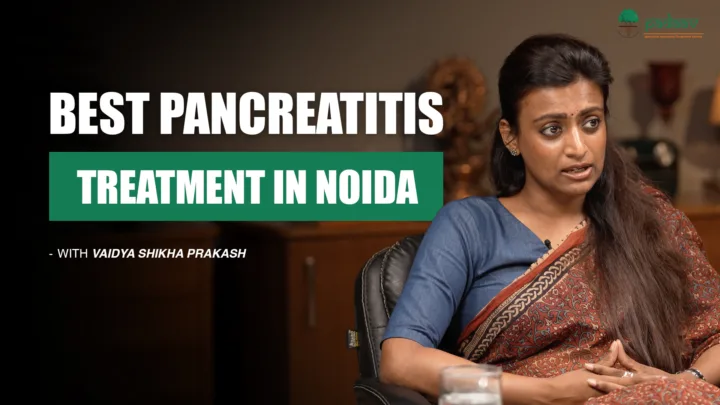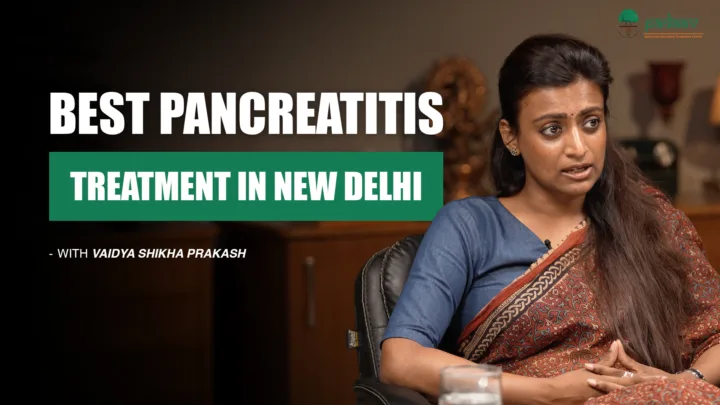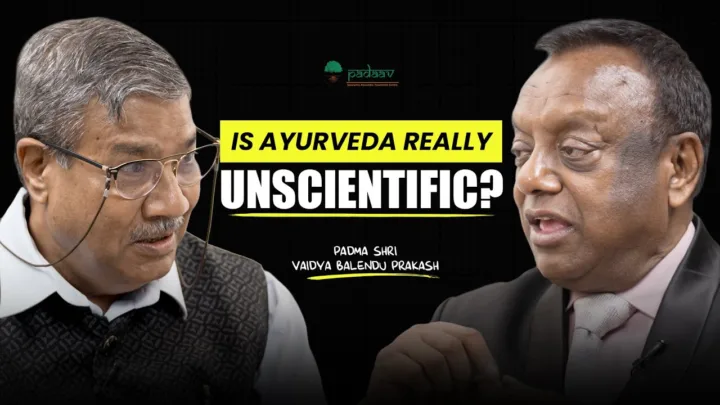Pancreatitis, the inflammation of the pancreas, is often an overlooked yet devastating disease. As a vital organ, the pancreas acts as the “powerhouse” for both digestion (releasing enzymes) and metabolism (producing insulin). When it fails, patients are left literally struggling to eat, absorb nutrients, and thrive.
At Padaav, our treatment philosophy is built on three pillars: Ahaar (Diet), Vihaar (Lifestyle), and Aushadh (Medicine). This article addresses the most frequent and crucial questions patients ask, emphasizing why diet is not a side note—it is the main script for managing pancreatitis.
Managing the Acute Crisis
Why is “Nil By Mouth” (NBM) Done Initially in Acute Pancreatitis?
When an acute pancreatitis attack strikes, the pancreas becomes severely inflamed. This triggers an overproduction of powerful pancreatic enzymes.
The core problem is Autodigestion: These enzymes, instead of flowing into the small intestine to digest food, get blocked and begin to digest the pancreatic tissue itself, causing intense pain and organ damage.
- The Logic of NBM: Keeping the patient Nil By Mouth (NBM) provides the pancreas with complete rest. Eating any food stimulates the pancreas to produce more enzymes. By stopping oral intake, we halt this stimulation, allowing the inflamed organ to calm down and begin the recovery process.
- The Benefit: NBM is the first line of treatment because it reduces pain, prevents further autodigestion, and prepares the patient for the next stage of recovery, often supported initially by IV fluids for hydration.
Why is Diet Reintroduced Gradually (Graded Refeeding)?
After the initial NBM phase, food cannot be reintroduced suddenly. The process, called Graded Refeeding, is stepwise:
- Hydration Therapy (IV Fluids/Oral Rehydration): First, the patient is kept hydrated with IV fluids or simple oral liquids (like lemon-honey water) while pain subsides.
- Semi-Solid/Soft Diet: Once stable, very light, easy-to-digest foods are introduced, such as lentil water (Daal ka paani), or thin rice gruel.
- Normal Diet: Only after the pain has settled and the body tolerates soft foods is a more regular, prescribed diet slowly resumed.
This gradual process ensures the pancreas is not suddenly overloaded, preventing a relapse or increased inflammation.
The Core Principles of Chronic Pancreatitis Diet
For those managing Chronic Pancreatitis, diet is a daily, critical tool against progressive disease and malnutrition.
The Golden Rules of Chronic Pancreatitis Diet:
- Low-Fat Diet (The Golden Rule): Fat requires the highest level of pancreatic enzyme output. A low-fat diet minimizes the organ’s workload.
- Small, Frequent Meals (The 3-Hour Rule): Eat small portions every 2 to 3 hours. Avoid long gaps and heavy meals.
- Nutrient-Dense Food: Focus on foods that provide high nutritional value without high fat content.
- Avoid Overeating: Eating past satiety places a sudden, heavy load on the pancreas, often leading to pain or triggering inflammation.
The Danger of Skipping Dietary Intervention: Pancreatitis is a progressive disease. Even small, casual attacks that are not severe can cause constant, low-level tissue damage. This cumulative damage leads to malnutrition over time, worsening the patient’s condition. Long-term dietary compliance is essential for stability and preventing the disease from progressing toward severe complications.
The Pillars of a Pancreatitis-Friendly Diet
1. Seasonal Eating (The Ayurvedic Principle)
Adopt the Ayurvedic principle of Ritucharya (eating according to the season). Nature provides the nutrients your body needs in that specific climate.
- Summer: Focus on light, watery vegetables like Lauki (bottle gourd), Torai (ridge gourd), and Parval (pointed gourd).
- Winter: Consume warming, nourishing leafy greens and seasonal vegetables.
Seasonal foods are fresh, easy to digest, and offer optimal micronutrients.
2. Safe Grains and Carbohydrates
Choose grains that are easy to assimilate and provide a constant, manageable source of energy:
- Safe: Rice (if non-diabetic), Barnyard Millet (Jhangora), Barley (Jau), Oats, and Ragi.
- Tip: These should be introduced slowly and steadily into the diet.
3. Pulses and Proteins (Vegetarian)
Protein is vital for tissue repair.
- Safe Pulses: Moong, Masoor, Arhar (Tur)—simple, easy-to-digest lentils.
- Avoid: Chana Dal (Chickpea split), Urad Dal (Black gram), Rajma (Kidney beans), Chhole (Chickpeas), and Lobia (Black-eyed peas), as they often cause gas and bloating.
- Excellent Alternatives: Tofu and Soybeans are good protein sources.
4. Safe Non-Vegetarian Options
The key is preparation and leanness:
- Safe: Eggs, lean chicken, and fish.
- Preparation: Must be boiled, steamed, roasted, or grilled. Deep-frying is strictly prohibited.
- Avoid: Red meat (high cholesterol), shellfish (lobster, prawn, crab).
5. Fruits, Fluids, and Dairy
- Fruits: Stick to seasonal fruits (papaya, apple, pear). Consume them as a mid-meal snack (between breakfast and lunch).
- Coconut Water: An excellent natural hydrator. Drink it fresh, avoiding tetra-packed/processed versions.
- Dairy (Generally Avoided/Limited): In the modern science context, thin buttermilk or low-fat milk/curd may be tolerated. However, complex dairy items must only be introduced under medical or Ayurvedic supervision, as practiced at Padaav.
Conclusion: The Rest Principle
Whether dealing with an acute crisis or managing chronic progression, the underlying treatment principle for the pancreas is Rest (Aaram).
- For Acute Pancreatitis, rest means NBM (no food) and hydration.
- For Chronic Pancreatitis, rest means EAT LIGHT, EAT FREEQUENT, AND HYDRATE WELL.
Diet is not a mere suggestion; it is the physical manifestation of the rest your pancreas desperately needs. Failing to implement these dietary interventions allows the disease to progress, leading to severe malnutrition and worsening health over time.
